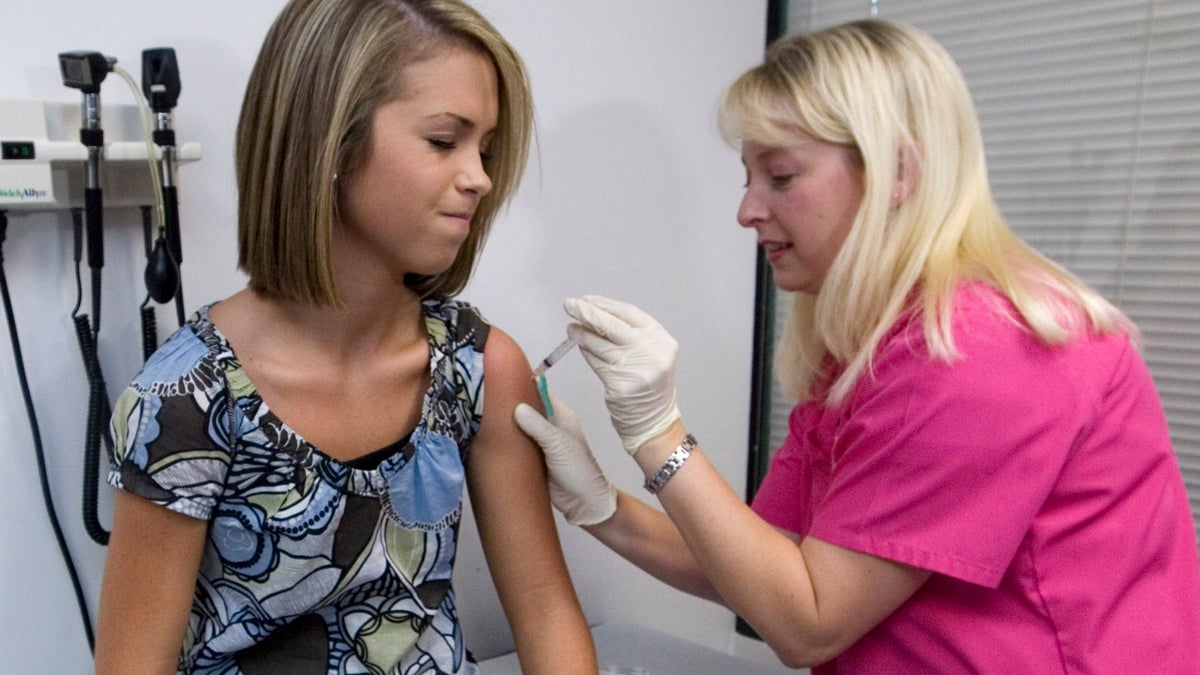Girls in low-income areas more likely to get HPV vaccine than wealthier girls

In this Dec. 18, 2007 file photo, a patient winces as she has her third and final application of the Human Papillomavirus (HPV) vaccine administered by a nurse at a doctor's office (John Amis/AP Photo, File)
Girls living in poorer communities are more likely to receive anti-cervical cancer vaccines than their peers in wealthier ZIP codes.
The counterintuitive results are found in a new study by researchers at Temple University and are published in the American Association for Cancer Research’s journal Cancer Epidemiology, Biomarkers & Prevention.
Nearly 64 percent of girls from ages 13 to 17 living below the poverty line received at least one dose of the human papilloma virus vaccine, compared with 52 percent of girls in families living in high-income ZIP codes.
Race and ethnicity also predicted which girls were most likely to receive the vaccine. Hispanic teens outpaced their peers, with 64 percent getting at least one shot. Black adolescents received the vaccine 53 percent of the time, while 49 percent of white girls were vaccinated.
“It is likely related to some of the safety net programs that exist,” said Temple’s Kevin Henry, the study’s lead author. “It is related to some of the doctors that are certainly recommending it, and it is potentially related to community based interventions that are going on to get the word out about how important it is.”
The study, based on more than 20,000 responses to a national survey, found that girls on Medicaid, the federally funded health insurance program for the poor, were more likely to receive the vaccine than those on private insurance.
Henry said the findings can be a useful tool for shaping future public policy.
The human papilloma virus, which is spread through sexual contact, can cause a range of cancers later in life. The CDC recommends the vaccine for boys and girls beginning at age 11.
A study last year found that Philadelphia leads the nation in HPV vaccination rates, with 59 percent of teen girls receiving all three recommended doses.
WHYY is your source for fact-based, in-depth journalism and information. As a nonprofit organization, we rely on financial support from readers like you. Please give today.

